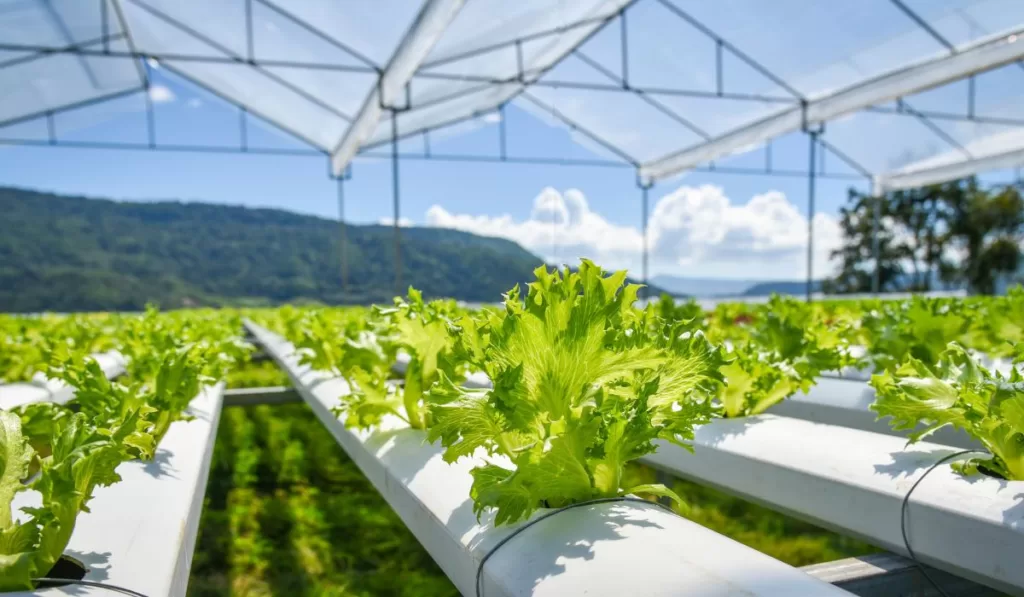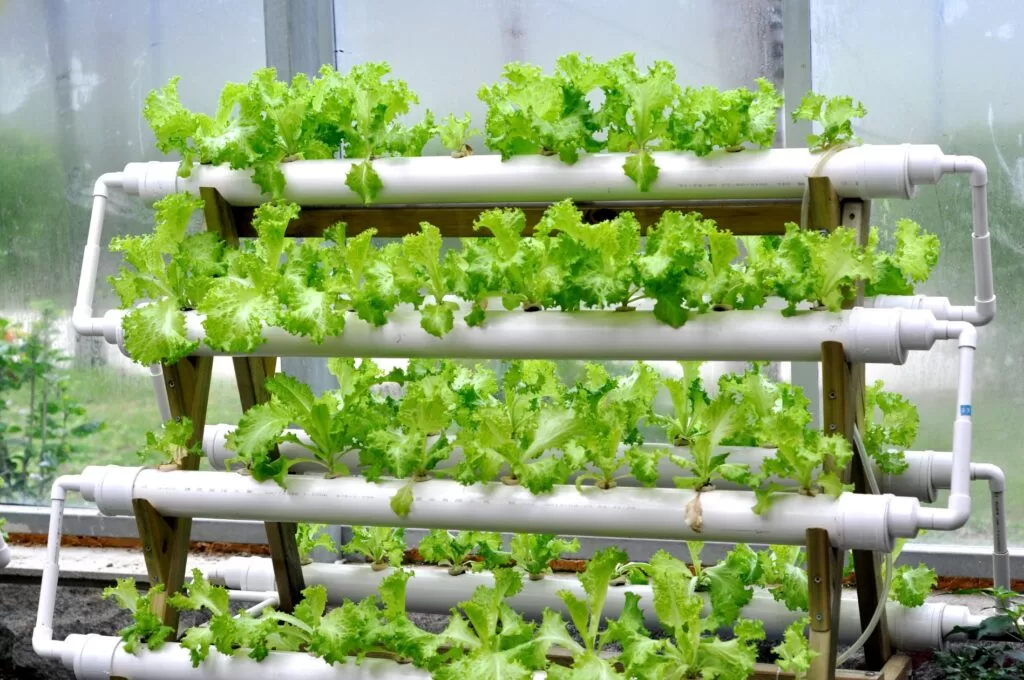Introduction to Nutrient Solutions
Hydroponic gardening offers an efficient and sustainable way to cultivate plants without soil, using nutrient solutions instead. Nutrient solutions play a vital role in providing essential minerals and elements for plant growth and development. By selecting the right nutrient solutions, you can optimize crop production and ensure healthy plants thriving in your hydroponic system.
Understanding Plant Nutrient Requirements
To choose the appropriate nutrient solutions, it is crucial to understand the specific nutrient requirements of plants in hydroponic systems. Plants require primary macronutrients such as nitrogen, phosphorus, and potassium, as well as secondary macronutrients like calcium, magnesium, and sulfur. Additionally, micronutrients such as iron, manganese, zinc, and others are essential for proper plant nutrition and overall health.
Essential Factors in Nutrient Solution Selection
When selecting nutrient solutions for hydroponics, several factors should be considered. Nutrient availability is important, ensuring that the chosen solution contains the necessary elements in a readily absorbable form for plants. Maintaining the correct pH balance is crucial as it affects nutrient uptake. Nutrient concentration levels should be carefully managed to prevent deficiencies or toxicities. Furthermore, compatibility with your specific hydroponic system, whether it’s a recirculating or non-recirculating system, should be taken into account.
There are different types of nutrient solutions available, including pre-mixed solutions and customizable formulations. Pre-mixed solutions are convenient and suitable for beginners, while customizable formulations allow growers to tailor nutrient concentrations based on the specific needs of their plants.

Popular Nutrient Solution Brands and Products
Several reputable nutrient solution brands and products are available in the market. These brands offer a range of nutrient profiles designed for different hydroponic crops and growth stages. Whether you prefer organic or synthetic options, there are nutrient solutions available to suit your preferences and growing style. It’s important to research and select products from trusted brands to ensure quality and consistency in your hydroponic system.
DIY Nutrient Solutions: Formulation and Customization
Formulating your own nutrient solutions gives you control over the nutrient composition and allows for customization. By using individual salts and compounds, you can create nutrient solutions tailored to your specific crop requirements. Guidelines for adjusting nutrient concentrations and pH levels based on plant needs are readily available. However, it’s essential to follow precise measurements and calculations to avoid imbalances or potential harm to your plants.
Nutrient Solution Management and Maintenance
Proper management and maintenance of nutrient solutions are critical for successful hydroponic gardening. Regular monitoring of nutrient levels, pH, and electrical conductivity (EC) is necessary to ensure optimal plant nutrition. Adjustments to nutrient concentrations should be made as plants grow and their requirements change. Nutrient deficiencies or imbalances should be addressed promptly to prevent negative effects on plant health and productivity. It’s essential to understand common issues like nutrient lockout and pH fluctuations and be prepared to troubleshoot them.
Nutrient Solution Alternatives and Supplements
In addition to traditional nutrient solutions, there are alternative options and supplements available to enhance plant nutrition in hydroponics. Organic additives, beneficial microbes, and bio-stimulants can improve nutrient uptake and overall plant health. These supplements can be incorporated into nutrient solution management practices to boost crop performance. However, it’s important to research and understand the specific benefits and considerations associated with each supplement and their compatibility with your chosen nutrient solution.
Case Studies and Success Stories
Real-life examples of successful hydroponic growers can provide valuable insights and inspiration. Case studies and success stories highlight specific crops, growth rates, and yield improvements achieved through proper nutrient solution selection. By examining the strategies, techniques, and nutrient solution choices of experienced growers, you can learn from their experiences and apply similar approaches in your own hydroponic endeavors.
Choosing the right nutrient solutions is a critical step in achieving success in hydroponic gardening. By understanding plant nutrient requirements, considering essential factors, exploring different nutrient solution options, and managing them effectively, you can optimize the growth and productivity of your hydroponic crops. Continue to explore and experiment with nutrient solutions to find the best fit for your specific needs and goals. Remember, the journey of learning and refining your nutrient solution management is a continuous process that will ultimately lead to fruitful harvests in your hydroponic garden.

Additional pieces of information that you might not be aware of or may have overlooked when it comes to choosing nutrient solutions for hydroponics:
- Water Quality: The quality of water used to prepare nutrient solutions is crucial. Impurities in water, such as chlorine, chloramines, or excessive levels of minerals, can affect nutrient availability and plant health. Using a water filter or allowing water to sit and dechlorinate before use can help improve water quality.
- Nutrient Ratios: It’s important to understand the ideal nutrient ratios for different growth stages of plants. Nutrient solutions should be adjusted to meet the specific needs of plants during the vegetative and flowering stages. Providing the right balance of macronutrients and micronutrients at each stage will promote optimal growth and development.
- Nutrient Solution Temperature: The temperature of the nutrient solution can impact plant nutrient uptake. Most plants prefer nutrient solutions maintained at temperatures between 65-75°F (18-24°C). Monitoring and adjusting the temperature of the nutrient solution can help optimize nutrient absorption and plant performance.
- Seasonal Adjustments: Nutrient requirements can vary depending on the season and environmental conditions. During colder months, plants may have reduced nutrient uptake, requiring adjustments in nutrient concentrations. Consider adapting your nutrient solution formulation to accommodate seasonal changes and ensure plant nutrient needs are met.
- Nutrient Solution Sterilization: Maintaining a sterile nutrient solution is essential for preventing the growth of harmful pathogens and algae. Regularly sterilize your nutrient solution reservoir and equipment to minimize the risk of contamination and maintain a healthy growing environment.
- Nutrient Solution pH Drift: Over time, nutrient solutions can experience pH drift, causing fluctuations in pH levels. Monitoring and adjusting the pH regularly is crucial to ensure plants can effectively absorb nutrients. Automated pH controllers can be used to maintain a stable pH level in the nutrient solution.
- Watering and Feeding Frequency: The frequency of watering and feeding plants in a hydroponic system can vary depending on factors such as plant size, growth stage, and environmental conditions. It’s important to find the right balance between providing sufficient moisture and nutrients without over or underfeeding your plants.
- Nutrient Solution Replenishment: As plants absorb nutrients from the solution, it’s necessary to replenish the nutrient solution regularly to maintain proper nutrient levels. A general guideline is to replace the nutrient solution every 1-2 weeks or as needed, based on plant growth and nutrient consumption.
- Compatibility with Plant Varieties: Different plant varieties may have specific nutrient requirements. Researching and understanding the specific nutrient needs of the plants you intend to grow in your hydroponic system will help you select the most suitable nutrient solutions.
By considering these additional factors and understanding their impact on nutrient solution selection and management, you can further optimize the health, growth, and productivity of your hydroponic crops.
What are the essential nutrients that plants need in hydroponics?
Plants in hydroponics require macronutrients such as nitrogen (N), phosphorus (P), and potassium (K), as well as secondary macronutrients like calcium (Ca), magnesium (Mg), and sulfur (S). Additionally, plants need micronutrients such as iron (Fe), manganese (Mn), zinc (Zn), copper (Cu), boron (B), and molybdenum (Mo) in smaller quantities.
How do I determine the nutrient requirements of different plant species?
To determine the nutrient requirements of specific plant species, refer to research-based guidelines, hydroponic nutrient solution recipes, or consult with experienced growers. Consider factors like growth stage, crop type, and environmental conditions when adjusting nutrient concentrations.
Can I use regular fertilizer for hydroponics, or do I need specialized nutrient solutions?
Regular fertilizers are not suitable for hydroponics as they often contain elements that can clog the system or damage plants. Specialized hydroponic nutrient solutions are formulated with precise ratios of nutrients that are readily available for plants in a soil-less environment.
What is the ideal pH range for nutrient solutions in hydroponics?
The ideal pH range for nutrient solutions in hydroponics is typically between 5.5 and 6.5. This range allows for optimal nutrient availability and uptake by the plants. Regular monitoring and adjustment of pH levels are essential to maintain nutrient availability and prevent nutrient deficiencies or toxicities.
How often should I change or replenish the nutrient solution?
The frequency of changing or replenishing the nutrient solution depends on factors such as plant growth stage, water quality, and system size. As a general guideline, it is recommended to change the nutrient solution every two to three weeks or when the nutrient concentrations become unbalanced or depleted.
Can I reuse nutrient solutions, or should I prepare fresh solutions for each crop cycle?
Nutrient solutions can be reused to some extent, but they should be monitored and adjusted regularly to maintain proper nutrient concentrations. Over time, nutrient solutions may accumulate unwanted substances or imbalances, so it is advisable to prepare fresh solutions for each new crop cycle to ensure optimal plant nutrition.
What is the recommended water quality for preparing nutrient solutions?
The recommended water quality for preparing nutrient solutions is one that is low in dissolved solids and free from contaminants. Use filtered or dechlorinated water to prevent the accumulation of harmful substances in the nutrient solution.

Are there any organic or natural alternatives to synthetic nutrient solutions?
Yes, there are organic or natural alternatives available for hydroponic nutrient solutions. Organic hydroponic nutrient solutions utilize natural sources of nutrients and may include ingredients like seaweed extracts, fish emulsions, or compost teas. These solutions provide a more sustainable and environmentally friendly option for hydroponic gardening.
How do I troubleshoot nutrient deficiencies or imbalances in my plants?
To troubleshoot nutrient deficiencies or imbalances, carefully observe the symptoms exhibited by the plants. Yellowing leaves, stunted growth, or discoloration can indicate specific nutrient deficiencies. Refer to nutrient deficiency charts or consult with experienced growers to identify and address the issue by adjusting nutrient concentrations accordingly.
Can I adjust nutrient concentrations based on the growth stage of the plants?
Yes, it is common to adjust nutrient concentrations based on the growth stage of the plants. During different growth stages, plants have varying nutrient requirements. For example, plants in the vegetative stage may require higher nitrogen levels, while those in the flowering or fruiting stage may require higher phosphorus and potassium levels.
What is the role of micronutrients in hydroponic nutrient solutions?
Micronutrients play a crucial role in plant growth and development, even though they are required in smaller quantities. They are involved in various metabolic processes and enzyme activities, contributing to overall plant health, nutrient uptake, and proper functioning of physiological processes.
Can I mix different nutrient solution brands or products together?
Mixing different nutrient solution brands or products together is possible, but it is recommended to follow the manufacturer’s instructions and guidelines. Some brands may have different nutrient compositions or formulations, which could result in imbalances or adverse effects on plant growth. Proceed with caution and consider consulting with experienced growers or conducting small-scale trials before mixing different products.
How do I prevent algae or bacterial growth in the nutrient solution?
To prevent algae or bacterial growth in the nutrient solution, maintain proper system hygiene and water quality. Ensure that light exposure to the nutrient solution is minimized, as light can promote algae growth. Regularly sanitize equipment and reservoirs, and monitor water temperature and oxygenation to discourage bacterial growth.
Are there any specific nutrient solution recommendations for specific hydroponic systems, such as NFT or DWC?
Different hydroponic systems may have varying nutrient solution requirements due to differences in nutrient delivery methods and root environments. It is recommended to refer to system-specific guidelines or consult with experienced growers who have expertise in the particular hydroponic system you are using.
What are the signs of nutrient solution pH imbalance, and how can I correct it?
Signs of nutrient solution pH imbalance include nutrient deficiencies, stunted growth, and yellowing or browning of leaves. To correct pH imbalance, adjust the pH using pH up or pH down solutions, following the manufacturer’s instructions. Regularly monitor pH levels and make gradual adjustments to maintain the optimal range for nutrient availability.






